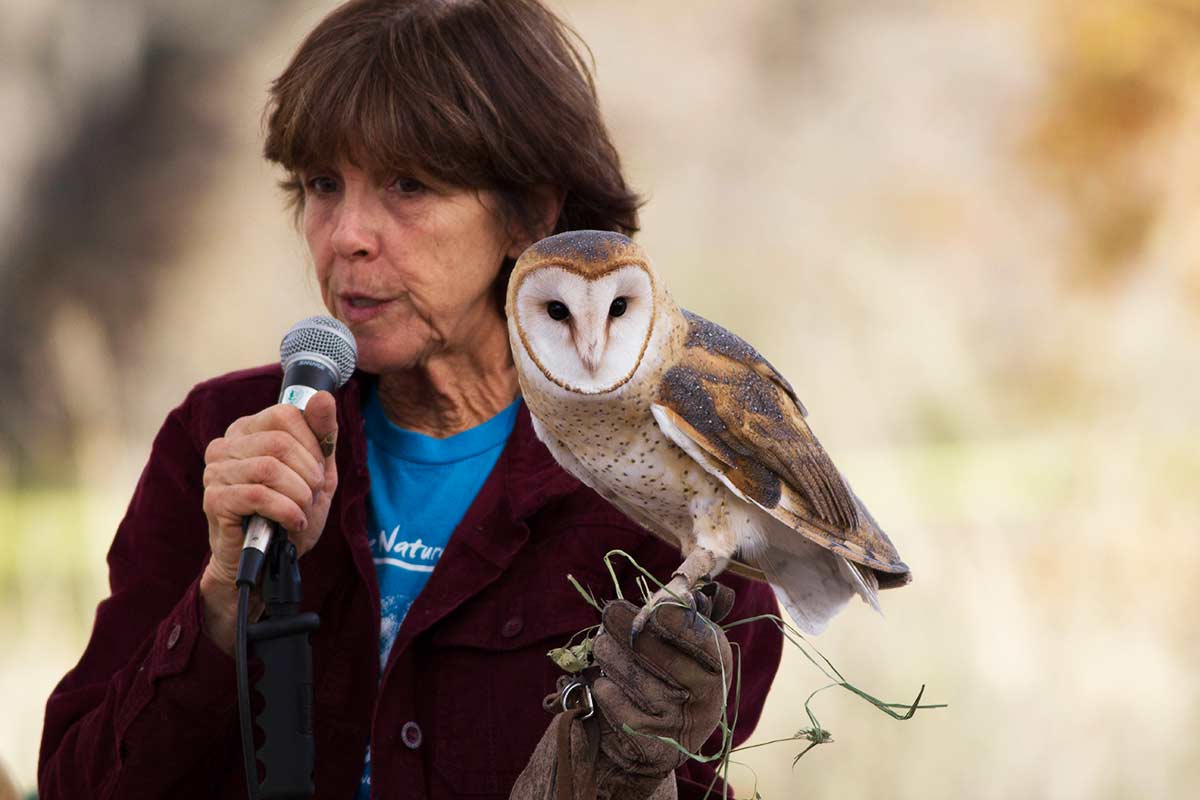
This past Saturday, I had the opportunity to attend the second annual Los Angeles Bird Fest. The free event was put on by the Western National Parks Association with participation by the National Audubon Society, International Bird Rescue, Heal the Bay, California Wildlife Center, and other vendors and organizations. The event kicked off at 9AM with bird walks being led by San Fernando Valley Audubon volunteers.
The first bird walk of the morning was led in two different groups that explored around the nearby King Gillette Ranch. As I’ve been busy with school lately, this was my first bird walk in a few months, so it was pretty refreshing. The group I was with seemed to be pretty new to birding with a few experienced birders being the exception. The woman leading the group was very knowledgable with many interesting tidbits about the usual species we spotted. The morning was good for birds and we were able to spot many different kinds flitting around in the trees near the pond. The leader pointed out Scrub Jays, House Finches, Red Tailed Hawks, Anna’s and Allen’s Hummingbirds, American Wigeons, Mallards, California Towhees and many other species. But two birds I spotted on the walk honestly made my year.
While the group was near the pond, the leader casually mentioned male and female Hooded Mergansers were on the water. HOODED MERGANSERS! These striking creatures are my favorite birds in the entire world! I’ve seen the drab females before, but seeing the glorious male Hooded Mergansers has been on my list for a while now! If you don’t already know, the Hoodie is the mascot of the Because Birds Tumblr. This was my moment.

I quickly scurried away from the group to the water’s edge to begin stalking and photographing the birds. Hooded Mergansers can be a challenge to photograph due to them constantly diving under the water for fish. There was a large number of them swimming in groups all over the water. Male Hooded Mergansers seem to be more elusive, as I had only ever seen females before. I watched in awe as they swam in an out of the shade from the trees above and snapped photos whenever the lighting was good. After I quelled my excitement and took an unhealthy amount of photos, I rejoined the group to continue the bird walk.
Hooded Mergansers can be a challenge to photograph due to them constantly diving under the water for fish.
Shortly after the Merganser excitement, I spotted two large green birds at the top of a distant tree. Two beautiful Nanday Conures were chilling there, preening and squawking. Exotic birds like this are not native to California and are likely descendants of escaped house pets that established themselves in the wild.
Once the bird walk was over and we were back at the festival area, I began making my way through all of the booths. The first thing you’ll see when you enter is a canopy set up with two falconers and their three birds. This group of falconers was at last year’s bird fest with their son, Ethan (one of our falconry contributors!). They were there with their Red-tailed Hawk, Buddy, a Northern Goshawk and another bird.

The California Condor Recovery Program was there to educate people about the work that was and is being done that brought this magnificent bird back from near-extinction. A woman involved with the organization informed me that they actually went out into the wild and captured every single remaining condor, brought them into captivity and began their successful breeding program. This greatly boosted the numbers of the birds and the program was considered a wild success. There is still more work to be done and one of the things they wanted to educate the public about was poisoning from lead bullets and other objects. Hunters that still use bullets with lead to kill wildlife cause harm to these birds indirectly. The carcasses of the animals become toxic and pose a threat to condors and other animals that might choose to consume them.
The Camarillo “bird museum” was in attendance as well, they had numerous bird specimens on display as well as a giant egg of an extinct bird known as the “Elephant Bird.” This bird dwarfs large ostriches in size and produces eggs that were mind-bogglingly large. They even allowed us to hold the bird specimens they brought (they looked like bird popsicles—see the slideshow below).
Like last year, I was really excited to see the bird show presented by Nature of Wildworks. Mollie brought a handful of interesting birds out to show the audience. All of the animals that the organization cares for are unreleasable animals that were displaced from zoos, kept as illegal pets, or injured wildlife. She started the show with a Blue and Gold Macaw named Sunny. Birds like Sunny often don’t have any flying skills, so she’s comfortable having the bird out without a harness, but she told a story about a time where the bird got spooked and instinctively started flapping his wings and flew up into a tall tree. Mollie also brought out a Harris Hawk named Queen, a Barn Owl named Dancer, and my two favorites, a Barred Owl named Bertha, and an American Kestrel named…Fidel Kestrel.
All in all, I had an awesome time at Bird Fest, I met several great organizations and I think I found a few great volunteer opportunities for the future.
